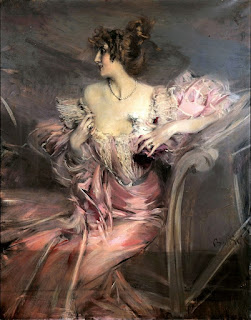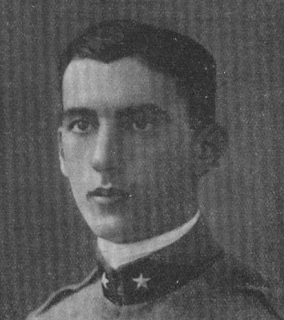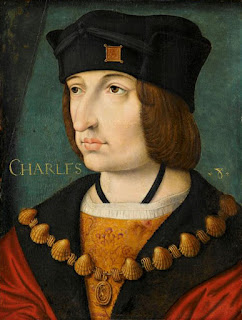Sought-after painter who captured elegance of Belle Époque
 |
| Giovanni Baldini: an 1892 self-portrait housed at the Uffizi Gallery in Florence |
Giovanni Boldini, whose sumptuous images of the rich and
famous made him the most fashionable portrait painter in Paris during the Belle
Époque era of the late 19th and early 20th centuries, was
born in Ferrara on this day in 1842.
His subjects included some famous names, including the opera
composer Giuseppe Verdi and the actress Sarah Bernhardt, and he had countless
commissions from prominent individuals in Parisian society.
Boldini's skill was to capture his subject in soft-focus, elongating
their features to accentuate beauty and creating a sense of motion in the figures
so that they appeared to be both sophisticated and full of life.
He dressed his subjects in sumptuous gowns that would grace
any fashion catwalk and society women in particular felt the need to confirm
their status by having a Boldini portrait to show off to their friends and demanded
that their wealthy husbands arrange a sitting.
Boldini came from an artistic background. His father, Antonio, painted religious figures
and scenes and had a house in Via Voltapaletto, which links Ferrara’s cathedral
with the Basilica of San Francesco. The
eighth of 13 children – all boys -- Giovanni was baptised on the day of his
birth in the church of Santa Maria in Vado.
 |
| Boldoni's portrait of Giuseppe Verdi is housed in Rome's National Gallery of Modern Art |
He began filling notebooks with sketches from the age of
five, even before he learned to write. Taught the rudiments of painting in his father’s workshop, he contented himself for a time copying the
works of the Renaissance masters. In
1856 at the age of 14, he produced a self-portrait of a quality that exuded a maturity
of technique beyond his years.
In 1862, he moved to Florence, where he would remain for six
years. His intention was to study formally at the Academy of Fine Arts, and
though he enjoyed the influence of some distinguished tutors, he attended classes infrequently,
preferring to immerse himself in a busy social life.
Renting an apartment in Via Lambertasca, he became a regular
at the Caffè Michelangiolo in Via Cavour, the haunt of a group of realist
painters known as the Macchiaioli, who were the Italian precursors to
Impressionism. Their influence is seen in Boldini's early landscapes.
He enjoyed success as a portraitist for the first time when
he moved to London, where he was commissioned by prominent society figures including
Lady Holland and the Duchess of Westminster.
His success continued when he moved to Paris in 1872, where he mingled
in the most fashionable salons and became part of a circle of artists that
included Edgar Degas, Alfred Sisley and Édouard Manet.
Boldini’s client list grew, but the invitation to paint
Giuseppe Verdi in 1886 took him to a new level.
The Italian composer was the biggest celebrity of the time and Boldini’s
portrait became an iconic image.
 |
| The portrait of Marthe de Florian that was discovered in a Paris apartment in 2010 |
Verdi introduced Boldini to the world of opera, which led to
many more commissions for portraits, both from artists and from the opera fans he
met in theatres and cafes around Europe.
As well as portraits, he also painted realistic and natural landscapes,
influenced by the Macchiaioli school. Only towards the end of his life did his
style become more impressionistic. So financially comfortable he no longer
needed to accept commissions for portraits to make a living, he began painting
subjects of his own choice, including many nudes.
He surprised his friends in 1929 by getting married, ending
86 years of bachelor life. At the wedding breakfast, he told guests: "It
is not my fault if I am so old, it's something which has happened to me all at
once."
In the event, it was a short-lived marriage. Two years later
he developed pneumonia and died in Paris. His body was returned to Italy and he
is buried in his hometown of Ferrara.
Boldini’s paintings can be seen in some of the world’s
finest art galleries and museums, although a great many are in private
collections. On the rare occasions they
come up for sale at auction, they change hands for considerable sums.
In 2010, a Boldini portrait of his former muse, Marthe de
Florian, a French actress, was discovered in an apartment near the Trinité
church in Paris between the Pigalle red light district and Opera.
The apartment had been abandoned at the outbreak of the
Second World War, when de Florian’s granddaughter fled to the South of France, and remained locked up and unvisited for 70 years.
A scribbled note from Boldini found nearby, written on a
calling card, confirmed the portrait’s authenticity and when it was sold at auction,
with a guide price of €300,000, the hammer eventually came down at €1.2
million.
 |
| The Cattedrale di San Giorgio Martire in Ferrara |
Travel tip:
Ferrara’s cathedral – the Cattedrale di San Giorgio Martire –
is one of the main sights of the centre of the city, situated close to the Castello
Estense and the Palazzo Comunale. The
Romanesque design of the cathedral, consecrated in 1135, features three cusps
and a series of loggias, small arcades and rose windows. The interior,
refurbished in Romanesque style after a fire in the 18th century, houses
a number of notable statues and paintings, including a Crucifixion in bronze by
Niccolò Baroncelli and a Martyrdom of Saint Lawrence painted by Guercino.
 |
| A gathering of Macchiaioli painters at the Caffè Michelangiolo |
Travel tip:
The Caffè Michelangiolo at Via Cavour 21 in Florence was at
the centre of the city’s artistic community from the second half of the 19th
century until about 1920. The Macchiaioli group met there until about 1866. Today
the café houses the Leonardo da Vinci Museum, and still hosts exhibitions
and cultural events celebrating the historical, political and artistic themes
that characterized the coffee house in its heyday.










